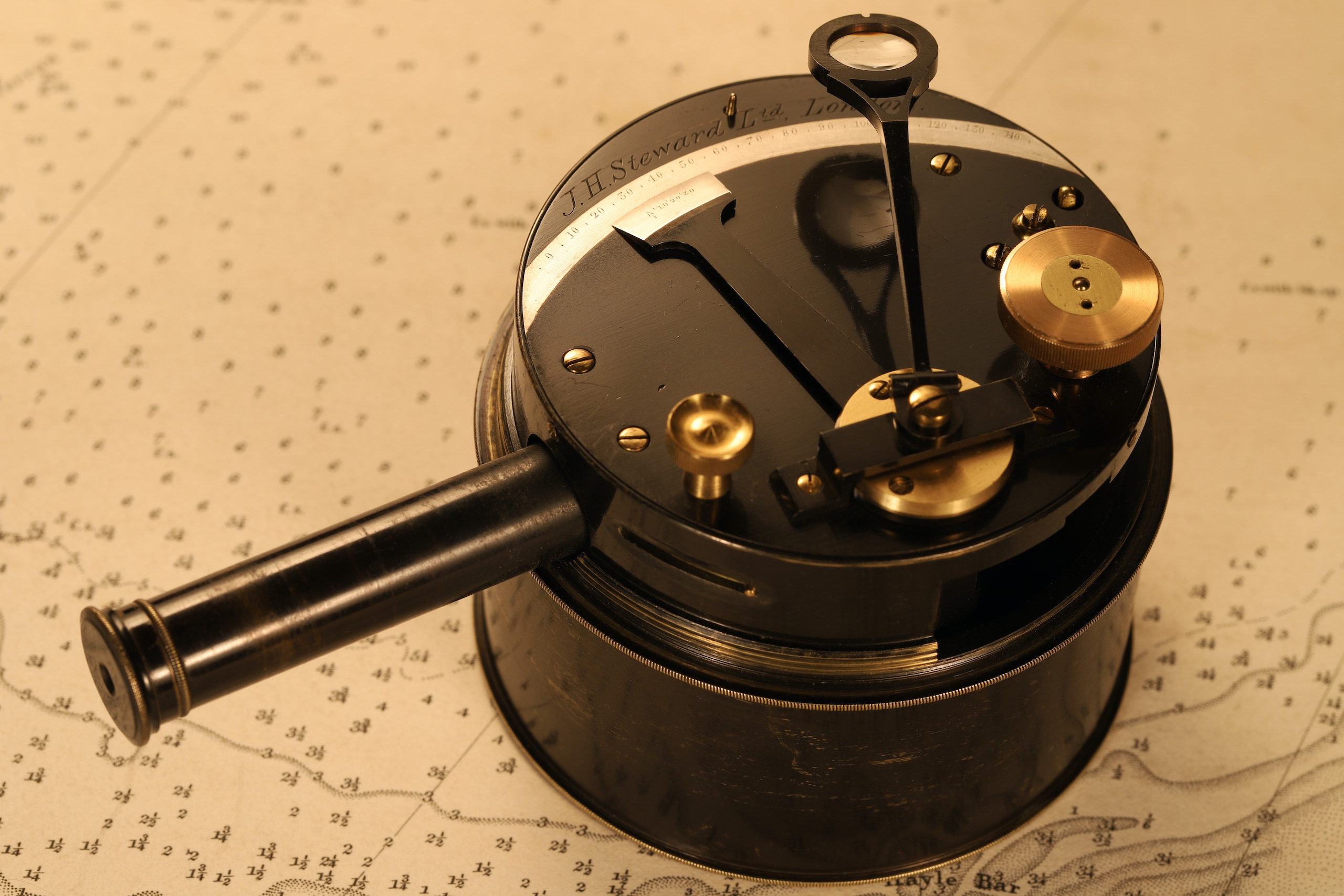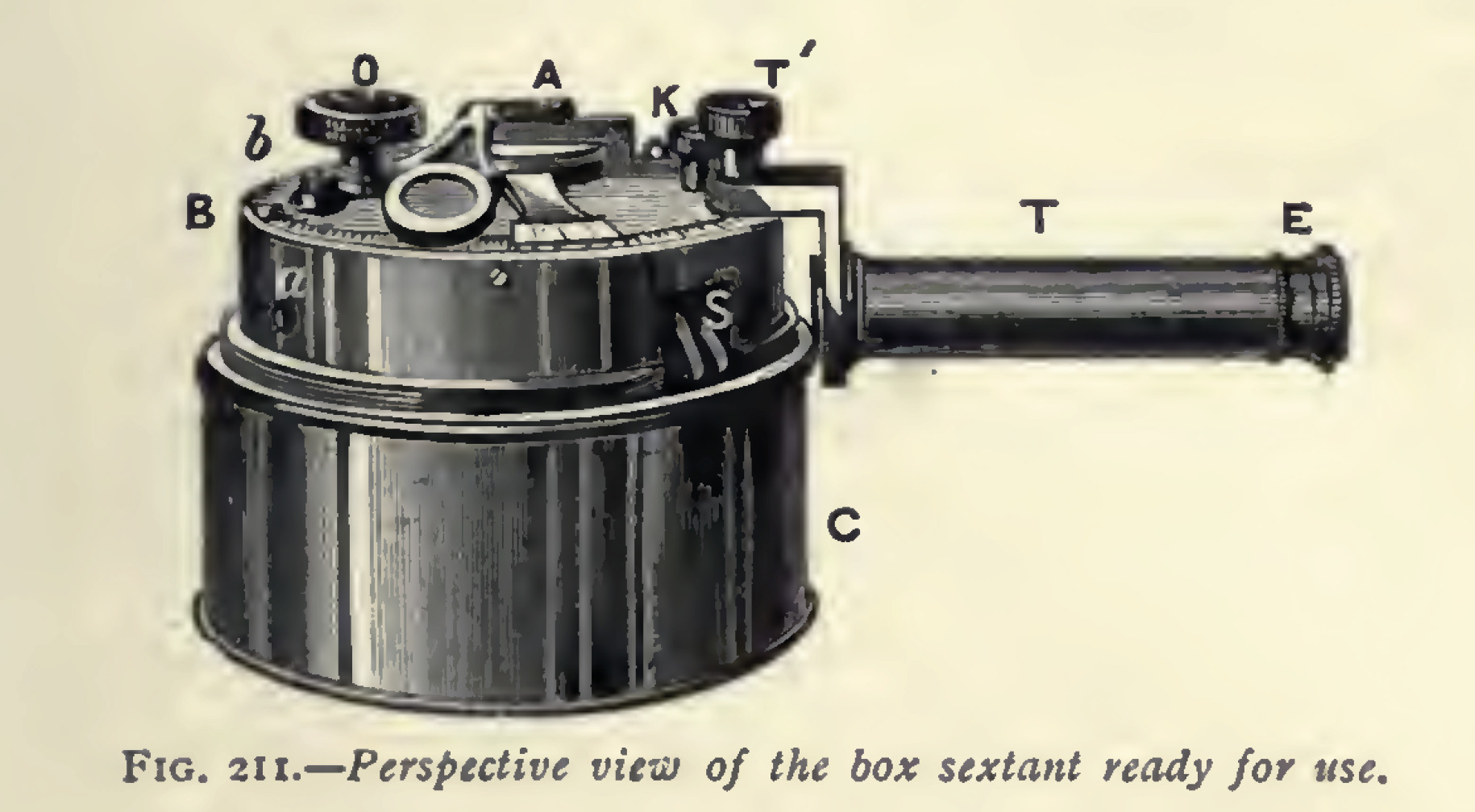A good and complete japanned brass pocket or box sextant with telescope by William Ford Stanley for J.H. Steward c1915
Box sextant constructed in japanned brass, arranged between two plates comprising semi circular azimuth scale calibrated in degrees and divided ½° with a range from 0° – 140°, wheel operated vernier and mirror, setting key, twin shades, articulating loupe. Hand engraved retailer’s details, “J.H. Steward, London.” Screw on and off cover attached to verso as additional handle. Complete with original refracting telescope, detachable neutral density filter.
Presented in its original leather and crimson cloth lined case, strap and buckle closure, hand marked with initials “C.L.M.”
Condition: Crisp overall, retaining much original finish, some minor losses and light abrasions. All functions working correctly, the mirror with very faint signs of deterioration to silvering, essentially bright and clean. The transport case with good external colour, structurally essentially sound.
Comments: J.H. Steward became a limited company in 1913 which assists in dating this instrument. This is probably a commercial or private purchase by an officer of the armed forces, not really rare but hard to find in such good original condition. Those instruments with telescopes must be considered scarce. Collectable condition.
Although unsigned, this example is almost certainly the work of William Ford Stanley – the image is of a Stanley box sextant dating to c1890.
A box (or pocket) sextant works on the same principle as a traditional sextant, but here the mechanism is enclosed in a brass box of about 3 inches diameter. William Jones, a leading instrument maker in London, introduced the form in 1797. The German explorer, Alexander von Humboldt, had an early example that he described as being “very useful for travellers when forced in a boat to lay down the sinuosities of a river, or take angles on horseback without dismounting.” By the mid-nineteenth century, box sextants were said to be particularly useful for military reconnaissance. They were still available in the early twentieth century.
Dimensions: 4" long x 3¼" deep x 2¼" high
Stock No: SI3024
Price: £575


